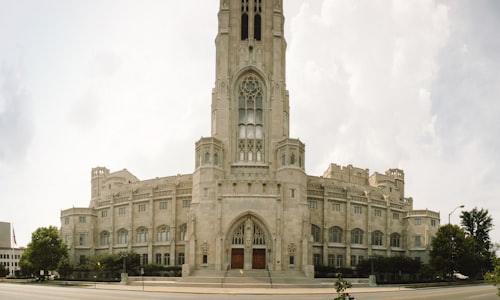Indy 500 facts
While investigating facts about Indy 500, I found out little known, but curios details like:
Despite over 100 years of competition, no one named "Smith" has ever raced in the Indy 500. However there have been two, unrelated, drivers named "Howdy Wilcox."
The first use of a rear-view mirror in a car was at the first Indy 500 in 1911
In my opinion, it is useful to put together a list of the most interesting details from trusted sources that I've come across. Here are 31 of the best facts about Indy 500 I managed to collect.
-
The rearview mirror was invented to help Ray Harroun win the first Indy 500. He dropped the 2nd man to lighten the car. The 2nd man's job was, in part, to look at other cars.
-
Indianapolis Motor Speedway is NOT located in Indianapolis, IN. Speedway, IN is the home of the Indy 500 and has its own town board, police and fire departments, school system and water company
-
In 1981 there was a Methanol fire at the Indy 500. Which burns colorless. (So you don't see any flames.)
-
In 1981 Indy 500, Rick Mear's Pit got caught on a Methanol Fire, which is invisible to the eyes on daylight
-
Deadly accidents were so common in early Indy 500 races that bookmakers offered propositions that allowed people to bet on whether a particular driver would live or die
-
James Dean became interested in car racing when his minister took him to the Indy 500 when he was just a child.
-
Janet Guthrie, the first female NASCAR driver who once placed 9th in the Indy 500 despite a broken wrist
-
Author J.D. Salinger was the Entertainment Cruise Director for the MS Kunsholm for three weeks in 1941; he was responsible for making sure 1,500 passengers had fun cruising the West Indies, which included organizing deck tennis games and dancing with single ladies on board
-
About Eddie Rickenbacker, Teen Race Car Driver (1911 Indy 500), WWI Ace (26 kills), Owner/Operator of Indianapolis Speedway 1937-45, Survived 24 Days in a Life Raft in WWII, Founder of Eastern Airlines, and Survivor of Numerous Airplane Crashes.
-
In the early days of the Indy 500, most drivers carried a "riding mechanic" with them. Their tasks included manually pumping oil and fuel, checking tire wear, spotting (no rear view mirrors for most yet), communicating with the pits, and even massaging the driver's hands.

What is true about indy 500?
You can easily fact check it by examining the linked well-known sources.
In 1916 the Indy 500 was actually an Indy 300 as the length of the race was cut do to the worry that spectators were getting bored with a six hour race.
Racing driver Jim Clark won his second F1 World Championship, the Indy 500, the Tasman Cup, the French F2 Championship and numerous saloon and sports car races. All in one year. - source
During Bump Day Qualifications For The 1972 Indy 500, Jim Hutubise brought his Miller Beer sponsored car up for qualification. When time ran out before he could attempt to qualify, he revealed that his car had no engine and instead had 5 chilled cases of Miller inside. - source
Dave Evans finished all 500 miles of the 1931 Indy 500 race without a pitstop, driving the first diesel entry into the race.
During the 1920s 'Board Track Racing' (races on speedways paved with wooden boards) was popular in America. Four different Indy 500 winners lost their lives on the tracks (three of the four at the same track in Altoona, PA). - source
All of the cars in the Indy 500 use the same design, the Dallara
There's a golf course surrounding part of the Indianapolis Motor Speedway, home of the Indy 500. Originally built in 1929, The Brickyard Crossing has four holes which go inside (and under) the track, as well as an additional 14 outside of the stadium.
Indy racer Kenny Bräck survived one of the racing sport's biggest accidents in Fort Worth, Texas 2003, in which a deceleration of 214g was measured. 18 months later he made a comeback at the Indy 500 and set the fastest qualifying time of the field. He retired from IndyCar racing after the race.
An 11 year old boy, Wilbur Brink, was killed during the 1931 Indy 500 race when a tire from a race wreck flew out of the Speedway, across the street, and over his house, landing on his head as he played in his backyard.
John Glenn crashed in a pace car during the Indy 500 injuring over 20 people.
The Indy 500 is the largest non religious gathering.